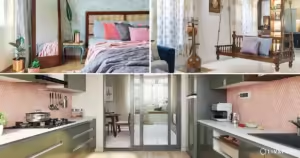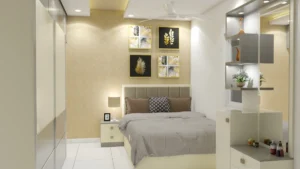In kitchen and bathroom retail, customer satisfaction is not just a bonus—it’s the key to business longevity and growth. Happy customers mean repeat business, positive referrals, and long-term relationships, all of which drive success. But how do you measure customer satisfaction, and more importantly, how can you improve it?
Let’s explore how tracking and enhancing customer satisfaction can give your kitchen and bathroom retail business a competitive edge.
1. Track Customer Satisfaction Through Digital Tools
To truly understand how satisfied your customers are, you need to track key metrics. Leveraging digital tools like kitchen CRM platforms and project management systems can help you monitor every customer interaction, from initial contact to project completion. These tools provide valuable insights into your customer service levels, helping you identify strengths and areas for improvement.
Real-World Example:
Imagine you’re managing a kitchen remodel. With a CRM system, you can document every step—customer preferences, design approvals, and feedback. If customers frequently highlight delays in the design phase, you’ve identified a clear area to improve.
Pro Tips:
- Identify Trends: Regularly analyze data to spot trends in customer satisfaction.
- Act Quickly: Address issues as they arise to prevent dissatisfaction from escalating.
- Use Tools Wisely: Integrate CRM platforms with communication tools to streamline updates.
2. Implement Feedback Loops for Continuous Improvement
One of the most effective ways to enhance customer satisfaction is by gathering and acting on feedback. Your customers are the best judges of your service quality. By implementing feedback loops at strategic points, such as after a design proposal or project completion, you’ll gain actionable insights.
Real-World Example:
After completing a bathroom remodel, you send a survey to the client. Their response highlights that the installation process felt rushed. You address this feedback by allocating more time for future installations, improving the overall customer experience.
Pro Tips:
- Ask Specific Questions: Use surveys to gather targeted feedback (e.g., “How satisfied were you with the design process?”).
- Engage Directly: Follow up with customers to discuss their feedback in detail.
- Show Results: Inform customers about the changes made based on their feedback to build trust.
3. Use Real-Time Monitoring for Project Transparency
Customer satisfaction isn’t just about the final product—it’s about the entire journey. Providing transparency through real-time project monitoring keeps customers informed and confident.
Real-World Example:
You’re installing a custom kitchen design. Using a project management tool, you share real-time updates on progress, including design changes and installation timelines. Customers appreciate being kept in the loop, which fosters trust.
Pro Tips:
- Share Updates Regularly: Provide consistent updates via email or app notifications.
- Address Concerns Early: Use real-time tools to spot and resolve issues proactively.
- Boost Confidence: Transparent communication builds customer confidence in your business.
4. Focus on Customization to Boost Customer Satisfaction
Every customer wants their project to feel unique. Offering customizable options through 3D design tools or cabinet design software not only enhances satisfaction but also empowers customers to take ownership of their project.
Real-World Example:
A client wants a kitchen tailored to their cooking habits. Using 3D software, you create a design that integrates extra counter space and storage for their appliances. The client’s active role in the design ensures they are thrilled with the result.
Pro Tips:
- Involve Customers: Let customers participate in the design process for a personalized experience.
- Adapt Communication: Tailor communication styles and frequency to match individual customer preferences.
- Exceed Expectations: Incorporate unexpected custom touches that align with their vision.
5. Engage with Customers Post-Project for Long-Term Loyalty
Your relationship with customers shouldn’t end when the project wraps up. Regular post-project communication fosters long-term loyalty and increases the likelihood of referrals.
Real-World Example:
After completing a bathroom renovation, you send a follow-up email offering maintenance tips and a discount on future projects. The client appreciates the gesture and refers your services to a friend.
Pro Tips:
- Send Follow-Ups: Check in after project completion to ensure ongoing satisfaction.
- Offer Value: Provide additional resources, like maintenance guides or exclusive discounts.
- Stay Connected: Build a relationship by engaging with customers on social media or via newsletters.
Final Thoughts
Customer satisfaction is the cornerstone of success in the kitchen and bathroom retail industry. By leveraging digital tools to track and monitor satisfaction, creating feedback loops, offering project transparency, and focusing on customization, you can significantly enhance the customer experience.
Key Takeaways:
- Track Metrics: Use digital tools for data-driven insights.
- Seek Feedback: Regularly ask for and act on customer input.
- Prioritize Transparency: Keep customers informed throughout their project.
- Offer Customization: Deliver personalized experiences that exceed expectations.
- Build Loyalty: Engage with customers post-project to ensure long-term satisfaction.
By actively tracking and improving customer satisfaction, you not only meet but exceed expectations, turning one-time clients into lifelong advocates for your business. Start implementing these strategies today to elevate your customer experience and drive sustained growth in your kitchen and bathroom retail business.





